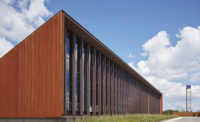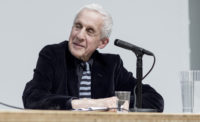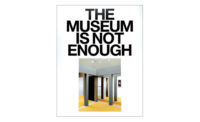Fellows Pavilion, American Academy in Berlin
Cultural Revolution: A small glass and steel pavilion for scholars and writers on the grounds of the American Academy in Berlin is an elegant essay in structure.












Architects & Firms
Berlin
At first, glancing through the tall windows of the 19th-century villa that houses the American Academy in Berlin'the center for transatlantic cultural and intellectual exchange conceived by former U.S. ambassador Richard C. Holbrooke in 1994'you see what seems to be a big white tent pitched in the Academy's spacious yard overlooking Lake Wannsee. That form turns out to be the roof of the new Fellows Pavilion, designed by the Berlin and New York architectural practice Barkow Leibinger to provide additional workspace for some of the scholars, writers, and other professionals awarded residence fellowships at the Academy each year.
Because the envelope was defined by the volume of a then-extant 1970s bathhouse, plus a program for seven study carrels and an entrance area containing a small kitchen and half bath, it is no surprise the architects looked up to create 'big' architecture. The roof of steel box-beams forms a double-curved surface that appears to float over the symmetrical layout below. Its form, produced with a 'ruled geometry' rotated to make four hyperbolic paraboloids, both gives it that tentlike quality and creates splayed gables over each elevation. The pavilion sits on a steel-frame mat, but it appears to float above the ground because the floor plane extends beyond the facade to create a cantilevered porch around the entire building.
The visual games do not end there. The walls are a combination of light steel-framed transparent planes and sliding glass doors. When occupants part those doors to enjoy the air, the wall is further dematerialized. Four outboard corner I-beam columns connect the sides of the roof and the cantilevered deck, but those columns also serve as downspouts and never meet the ground, which makes them seem structurally ambiguous, even decorative.
Only by standing inside and catching an oblique view of a corner does one begin to decipher the game. The roof load is dispersed among three systems: the four exterior corner columns; the thin black steel framing that joins the glass panels; and, innermost, white, right-angle steel 'sticks' set in from the corners. Viewed head-on, the three precisely aligned vertical elements conceal one another, creating a structural enigma. What is structural and what is ornamental? (We forget that, centuries ago, in his Ten Books of Architecture, Alberti said, 'The principal ornament in all architecture certainly lies in the column.') The fellows who occupy the pavilion seem aware only of the conveniences at hand: good light reflected off the white ceiling, built-in furniture, oak walls and floors that radiate heat, and draperies to close off views when they might distract.
Visitors aware of Mies van der Rohe's Farnsworth House may associate it with the Fellows Pavilion. The materials are similar, the color the same. But where Mies capped his house with an abstract, flat umbrella anchored to the ground, Barkow Leibinger produces a tentlike form not visibly tethered to the earth. Mies's scheme is more like an idea of an umbrella; Barkow Leibinger's tented roof is an actual form. This difference sets it apart from a modernist pavilion and gives new focus to the idea of the roof and the designs made possible working with digital geometries today.
PeopleClient/Owner: American Academy in Berlin
Architect:
Personnel in architect's firm who should receive special credit:
Engineers: Mechanical Engineer: HDH - Ingenieurgesellschaft für technische Gebäudeausrüstung mbH, Berlin Landscape Architect: Capatti Staubach, Berlin
Photographer(s):
©Stefan Müller Size: 915 square feet Construction cost: withheld Completion date: January 2015 |
Products
Structural system Customized fixed overhead light
Roofing
Glazing
Skylights:
Doors
Interior finishes
Paneling:
Floor and wall tile:
Special interior finishes unique to this project:
Furnishings Easy chair: Organic Chair, Vitra Side table: Occasional Table LTR, Vitra Desk: customized
Lighting
Task lighting: Floor lamp: Louis Poulsen, AJ
Energy |












